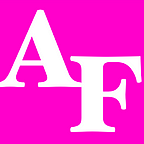My Eating Disorder Was Never “Enough”
How the “Female with an Eating Disorder” archetype is not representative and harmful to those with eating disorders
My eating disorder journey started the summer after junior year of high school when my mom told me she was skinnier than me. For the next 8+ years, I struggled with anorexia, bulimia, abuse of diet pills, orthorexia, and an assortment of disordered eating habits. For most of that period I didn’t want help. I wanted to be skinnier, to continue the harmful behavior, to, in fact, be better at the harmful behavior. There was finally a point when I was tired of puking, feeling fatigued, and the anxiety and I wanted to get help. But I didn’t, because in my mind I wasn’t skinny enough to the point where my eating disorder was “a problem” and I didn’t “deserve” to stop these behaviors. It had also been so long since I hadn’t thought about my body in negative ways and hadn’t organized my life around food/exercise that I didn’t know it was possible to feel differently.
Fast forward to today, I’ve come to realize that this not feeling enough (skinny enough, impacted enough, anxious enough, sad enough, harmful enough) was driven by the way eating disorders are portrayed in media, taught in school, or talked about in conversations. The mainstream view of an eating disorder is an emaciated teenage girl. To me, and maybe you, that image is idealized. That emaciation was what I was striving for. I felt that my eating disorder was never enough until I looked like the women below, who represent the societal archetype of eating disorders.
Unfortunately, many people still view eating disorders as directly related to BMI/weight (I acknowledge that BMI is a f*cked up and antiquated system. NEDA has a great article about how we need to change the way we view health here). In reality, women with eating disorders span the full BMI scale. In fact, only 6% of people with eating disorders are diagnosed medically “underweight.” Unfortunately, when women in larger bodies are anorexic, they are diagnosed as Atypical Anorexia since they don’t have the “typical” symptoms of significant weight loss or a low BMI. Even worse, many doctors and therapists don’t acknowledge that these people have an eating disorder and need help because they don’t fall into that normal anorexic category.
To this day, I have a hard time feeling like my experience was enough and worth fixing. I’ve come across a useful graphic recently that maps out how we feel when we are well and when we are unwell (below).
Poor eating habits (i.e. disordered eating) and eating disorder are listed under the orange and red categories requiring professional care. It was a “Oh duh” moment for me. Of course disordered eating and eating disorders aren’t signs of health. Of course these shouldn’t be normalized. Of course I shouldn’t use my competitive nature to get better at these harmful behaviors. Of course my experience was enough and I deserve to love myself.
The “Female with Eating Disorder” archetype is failing the eating disorder and disordered eating community. It restricts who is treated, it prevents people from seeking care, and it creates a mentality of not being enough.
More Resources:
